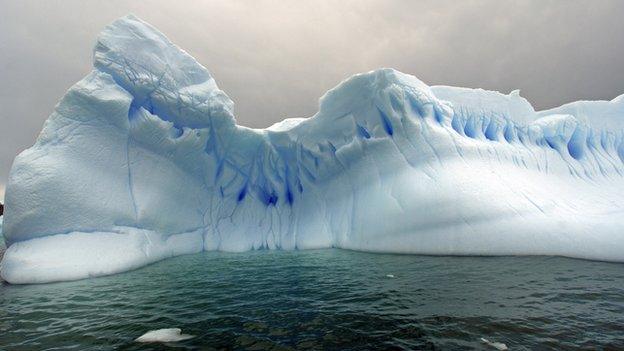Ozone layer was destroyed during Earth's biggest extinction
- Published
- comments
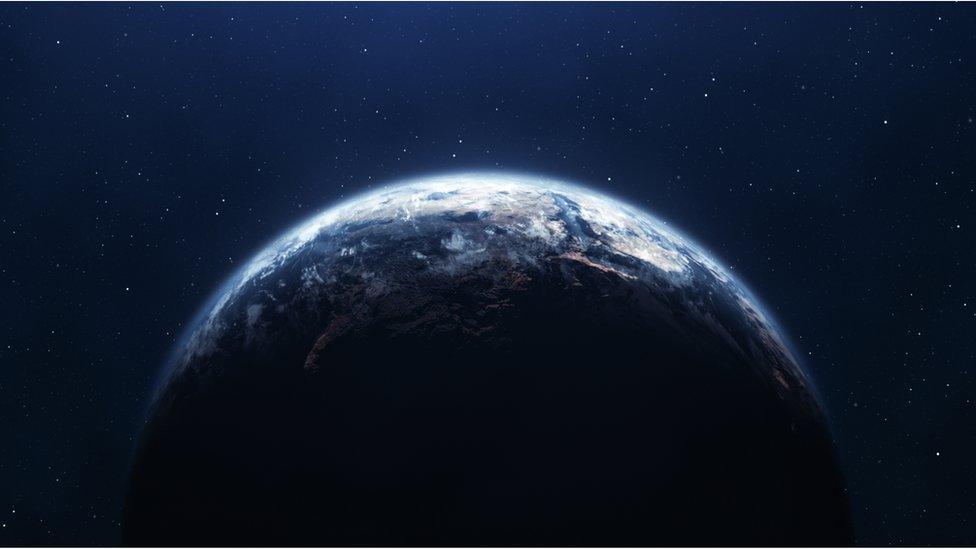
The ozone layer was destroyed during Earth's biggest mass extinction event, say scientists.
Around 250 million years ago, life on our planet was almost entirely wiped out during an event that has been nicknamed the 'great dying'.
Not to be confused with the extinction that caused the end of the dinosaurs 65 million years ago, the great dying saw almost all land and sea life suddenly vanish.
Its exact cause has remained a mystery for millions of years, but now experts have discovered more answers.
What is the ozone layer?
The ozone layer is the part of the Earth's upper atmosphere that absorbs harmful ultraviolet (UV) radiation from the Sun.
It exists today and protects all living things such as humans, animals and plants.
But 250 million years ago, during Earth's biggest extinction event, scientists have realised the protective ozone layer was missing.
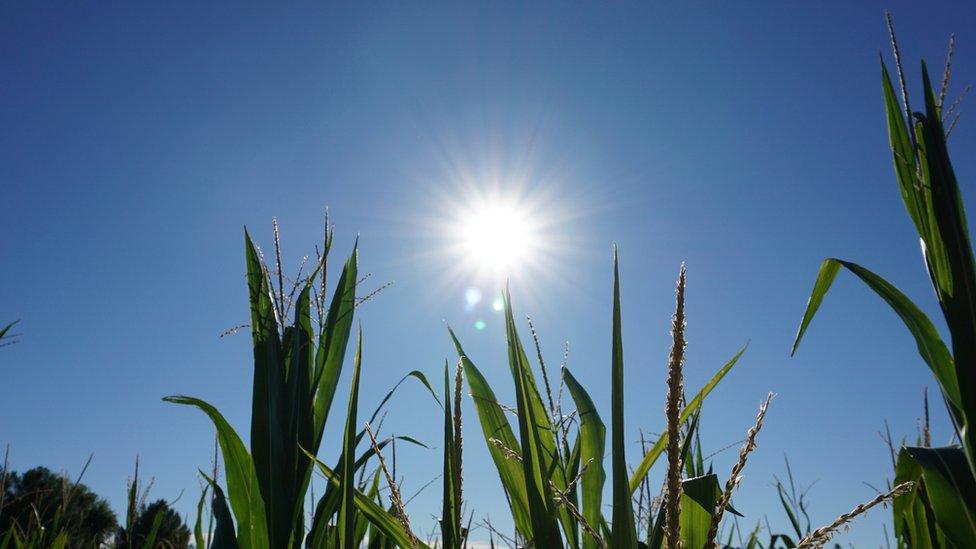
Fossils of some plants show they were producing higher levels of sun block chemicals to protect against the higher UV levels.
Professor Barry Lomax from the University of Nottingham worked on the study and explains: "Plants require sunlight for photosynthesis but need to protect themselves and particularly their pollen against the harmful effects of UV radiation."
But why was all of this happening?
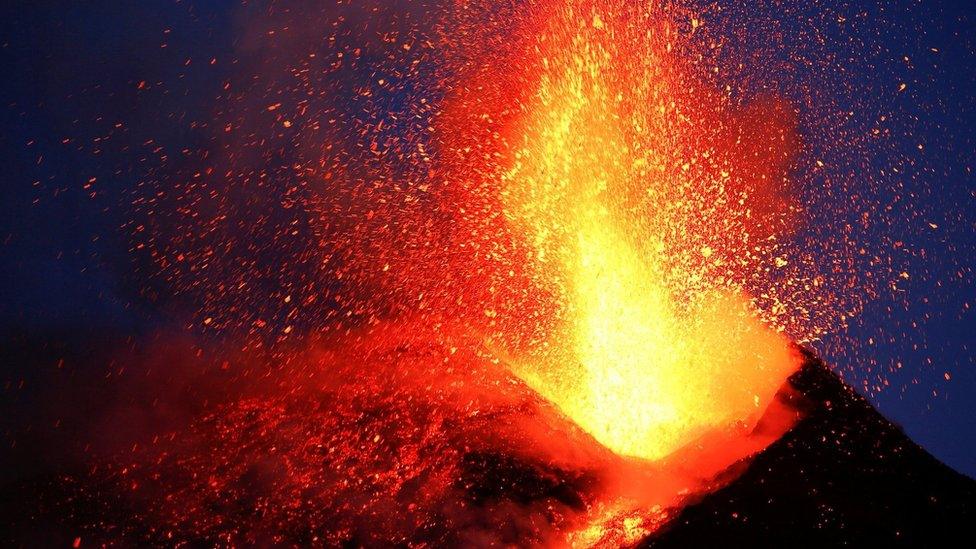
It's thought the mass extinction event was caused by a period of unusually high volcanic eruptions on the planet at the time.
As a result of the eruptions, greenhouse gas such as carbon dioxide was released into the air. This caused global warming and low oxygen levels in the sea - which meant ocean animals were unable to breathe.
As for the destruction of life living on the land, one theory is that greenhouse gas known as halocarbons released from the volcanic eruptions started to destroy the ozone layer, meaning life on land was exposed to the Sun's harmful radiation.
The Big Question: Why do volcanoes actually erupt?
Not only were halocarbons a big problem for Earth 250 million years ago, but history began to repeat itself through human activities during the 20th century.
In the 1970s it was discovered that common halocarbon used in spray can aerosols, air conditioning and fridges, known as chlorofluorocarbons, or CFCs for short, were rising into the upper atmosphere and destroying the ozone layer.
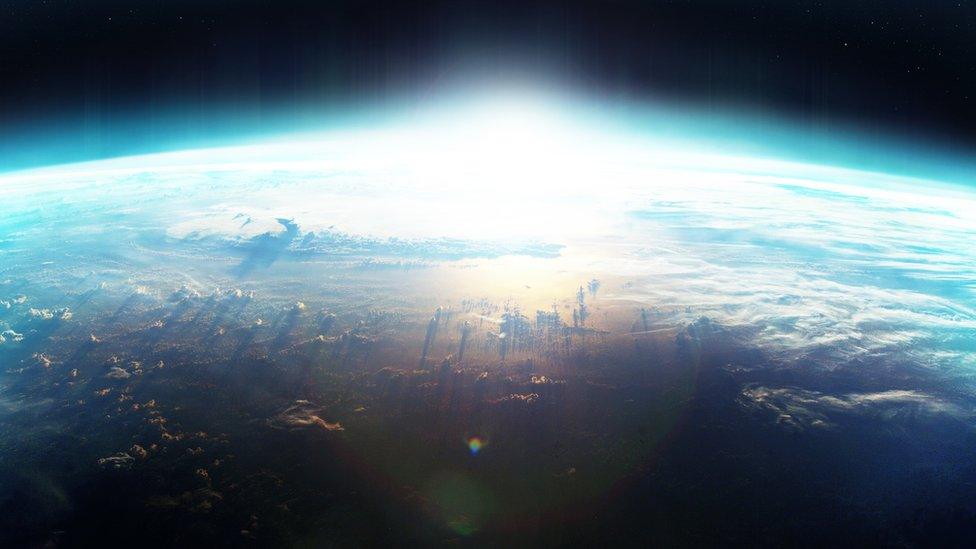
A hole in the ozone layer formed above Antarctica and in 1987 an international agreement banned CFCs to try and stop further damage.
Today CFCs are banned in 198 countries around the world.
Can the ozone layer be fixed?
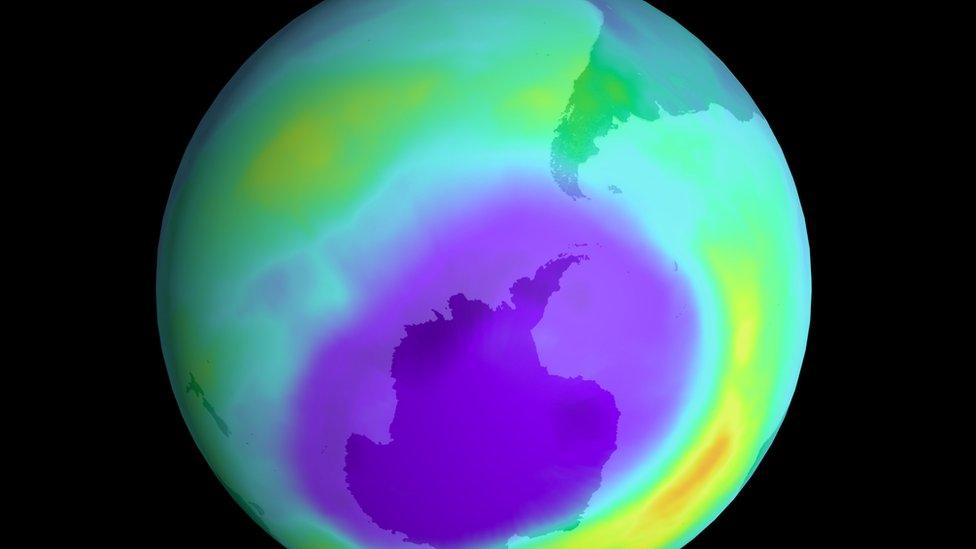
This Nasa picture shows the thinned ozone layer over Antarctica - but it is repairing over time
Just as a slowing of volcanic activity allowed the ozone layer to repair itself millions of years ago. Since CFCs were banned, there have been signs of recovery.
In 2018, Nasa found the first direct proof that the ozone layer was recovering. Their research showed that between then and 2005, ozone depletion was reduced by 20%.
However, it is thought that it will take until at least the middle of this century for the impact caused by CFCs to be revesed completely.
- Published3 March 2020

- Published11 February 2021
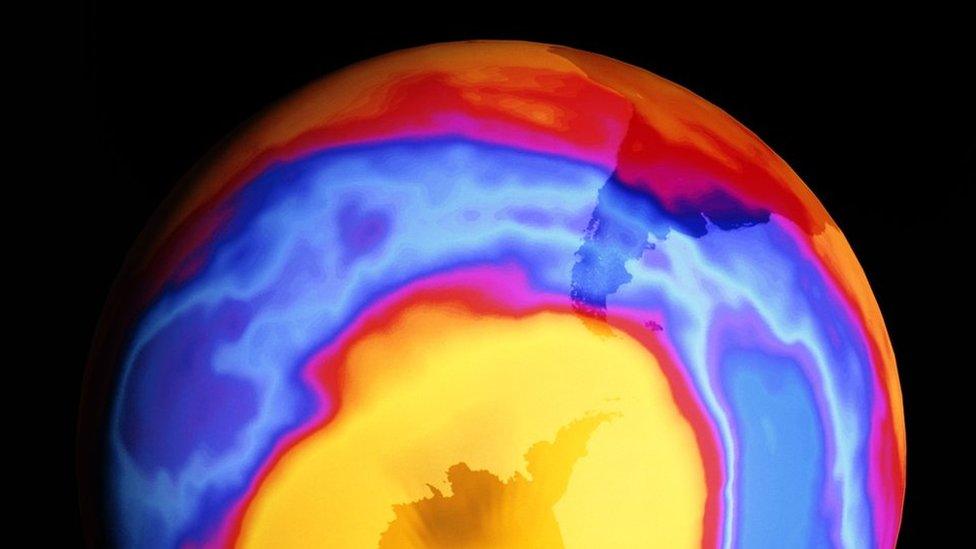
- Published1 July 2016
